Methods Matter
The methods you invent are as important as the actual artwork. They determine the nature of your work.
Methods matter. Any time you make a painting there is a certain method, procedure, or set of rules or rules of thumb that you have already formulated and committed to in the execution of the work. This work, prior to the actual making of the painting, is in fact a major part of the whole process. So, much attention has to be given to what these methods are and how they are brought into play. You create the method. And any change to the method will result in noticeable changes both to the work, and your whole experience of the creative act. If you are experiencing a motivational problem, perhaps consider altering the method. Even small changes to method will be noticeable and significant.
Whenever I notice an annoyance in my painting practice, I try to pinpoint exactly what might be causing it. Sometimes it’s just a matter of habituation…..of doing something the same way for too long. This could cause a drop in performance energy. But sometimes, the annoyance might be because something essential is missing in the procedure or making of the work.
I am very watchful of my moods toward my working sessions. If I sense my energy for the task is going down, even a bit, I start asking questions.
I work in a lot of different ways, and all of these ways serve slightly different needs. It is not that one way of working is better than another. Different methods lead to different results, and they also stem from slightly different desires. Or, sometimes just a change is as good as a rest.
I work on site directly from observation. I work from photo sections or photo combinations. I work entirely from memory sometimes. And sometimes the piece is entirely non-representational. And there are a variety of mediums, sizes and supports thrown into this mix as well.
Working from ballpoint pen quick 30 second diagrams like the one shown above is another method I started using more than 30 years ago, and I still employ the method often.
Whenever I leave home a ballpoint pen and folded up sheet of photocopy paper are in my breast pocket. When I see a motif that fascinates I study it for just a moment and distill it down to a few essential elements. The composition of shapes, as well as essential darks and lights, and the key color components, will be noted.
The important thing about this method, is that MOST of the visual information is left out. Only the most important aspects that created the impact or mood of the scene are noted. This would not quite be the case in a more purely observational way of working directly in front of the motif…other concerns would come to the fore.
This method allows me to concentrate almost exclusively on the mood and the memory of the experience. And it also allows me to be more experimental, abstract, and perhaps bolder with color relationships. The painting seems somehow more process oriented than would be the case if I was painting directly in front of the motif.
From this discussion we can see that the rules we set up about how we will proceed with creating a work, really do determine the outcome to a great degree, and they also determine how we experience the painting process from beginning to end.
To paint in this way feels very different than painting in the other methods I employ. And sometimes this change is necessary and allows me to return to full energy.
I suppose that working in this way from the initial quick diagram, is just a step away from working entirely from memory. And there is something freeing about this method after working directly from observation. It doesn’t mean that I won’t go back to working directly on site because certainly I will.
Incidentally, the above is a view of my new way of setting up my palette in a shallow tupperware container with a top that closes airtight. I set out the paint on parchment paper, spray some distilled water onto the paint, as well as some 70% rubbing alcohol (to prevent mold) when I cap the container after the session. I find I can keep the paint for a long time this way.
Above, the finished piece on 6 x 8 inch gessoed Stonehenge paper.
I think it makes much sense to gauge one’s energy for the painting process on a daily basis. When there is any dip in momentum one can shift procedures and invent new ones, and experiment freely with the aim of always keeping one’s energy for painting at the highest level.
New work is always posted daily to:



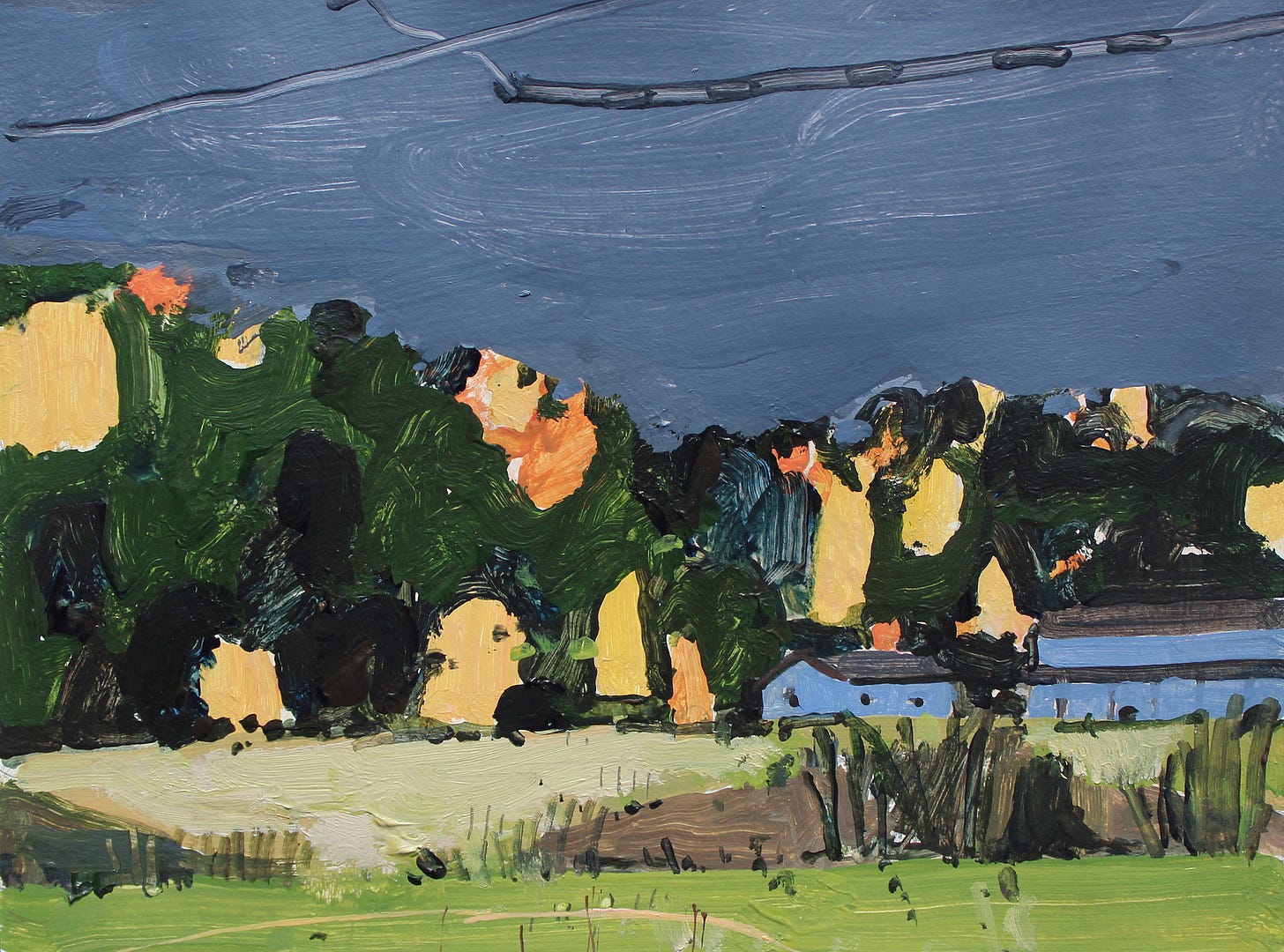
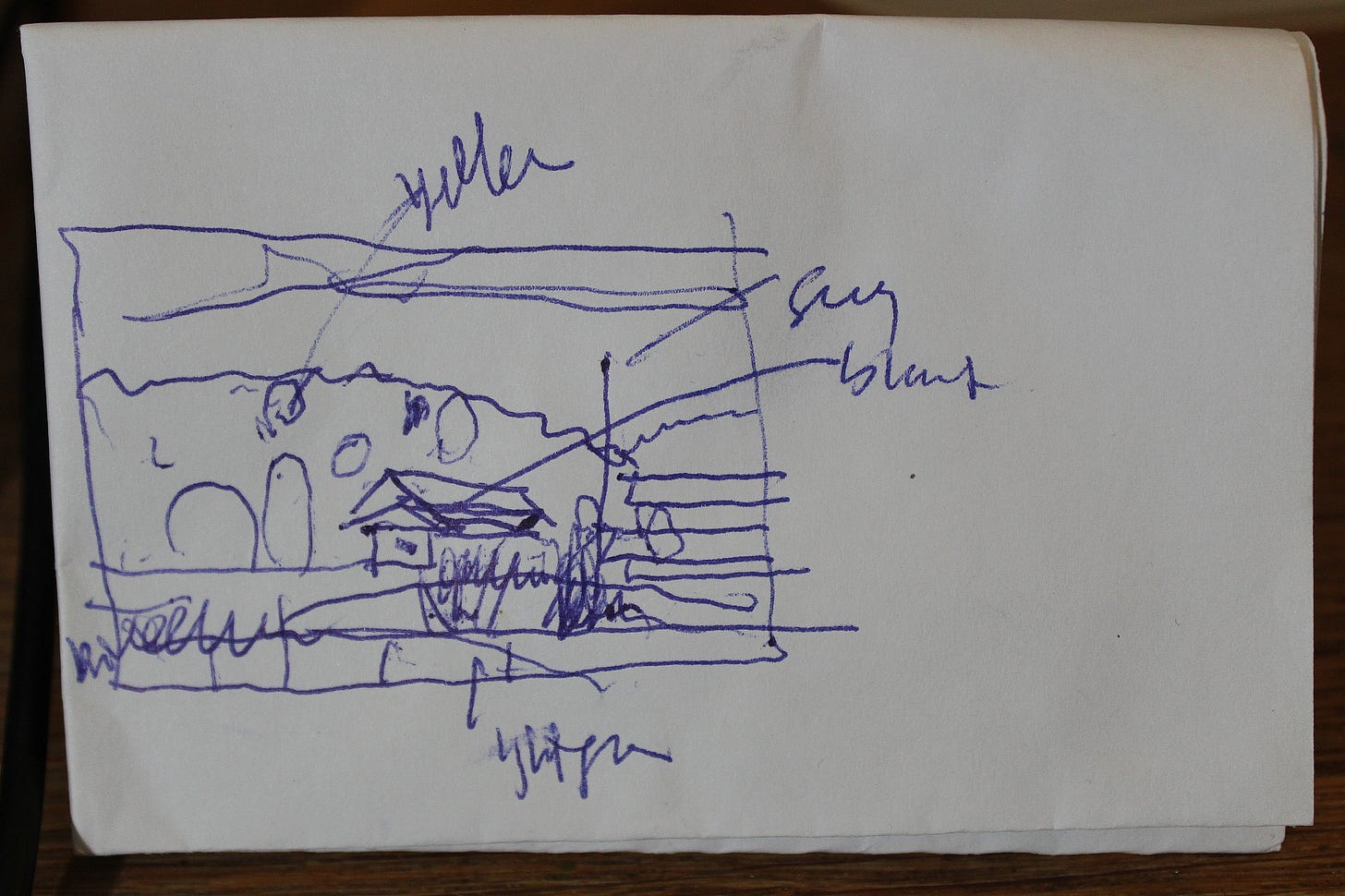
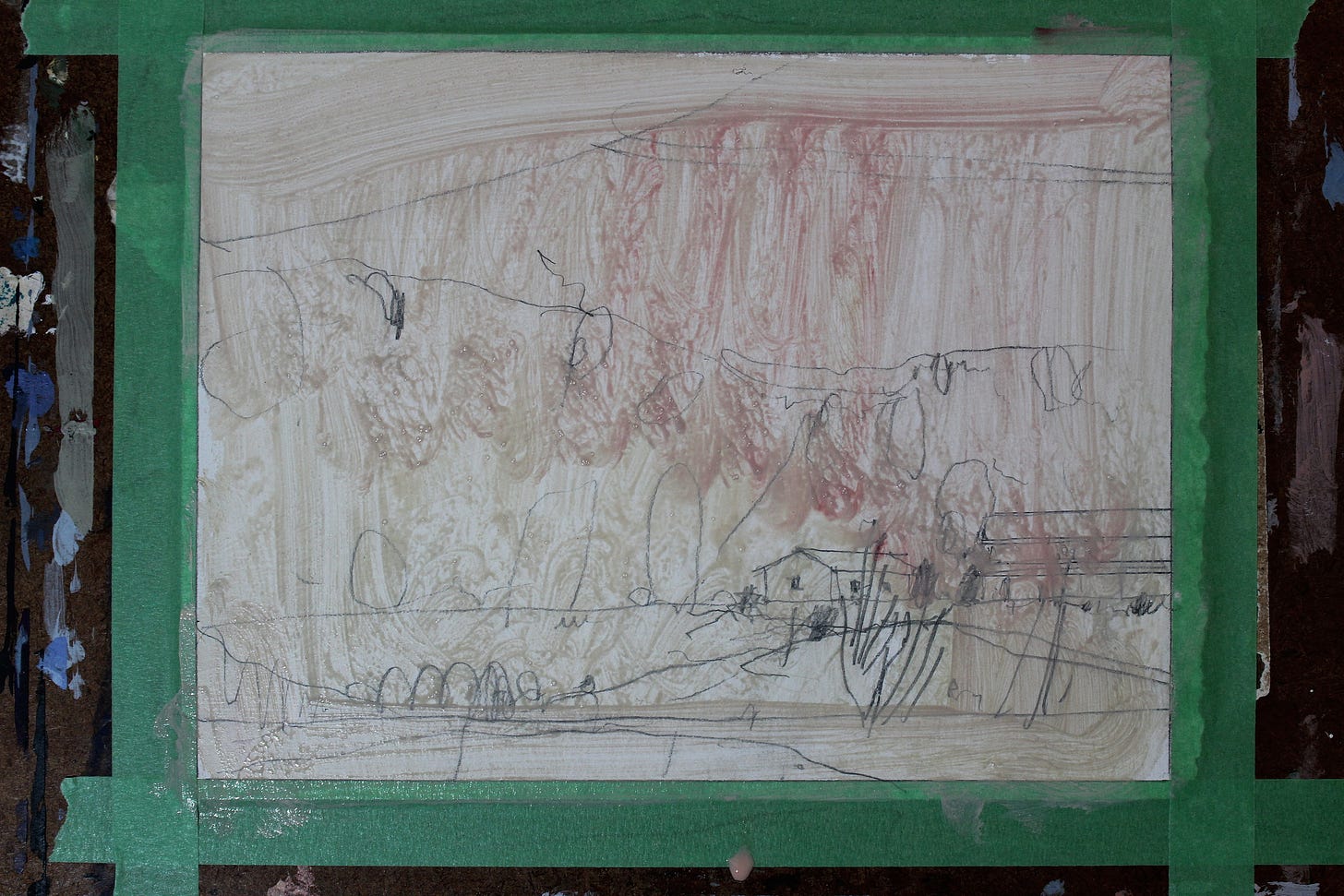
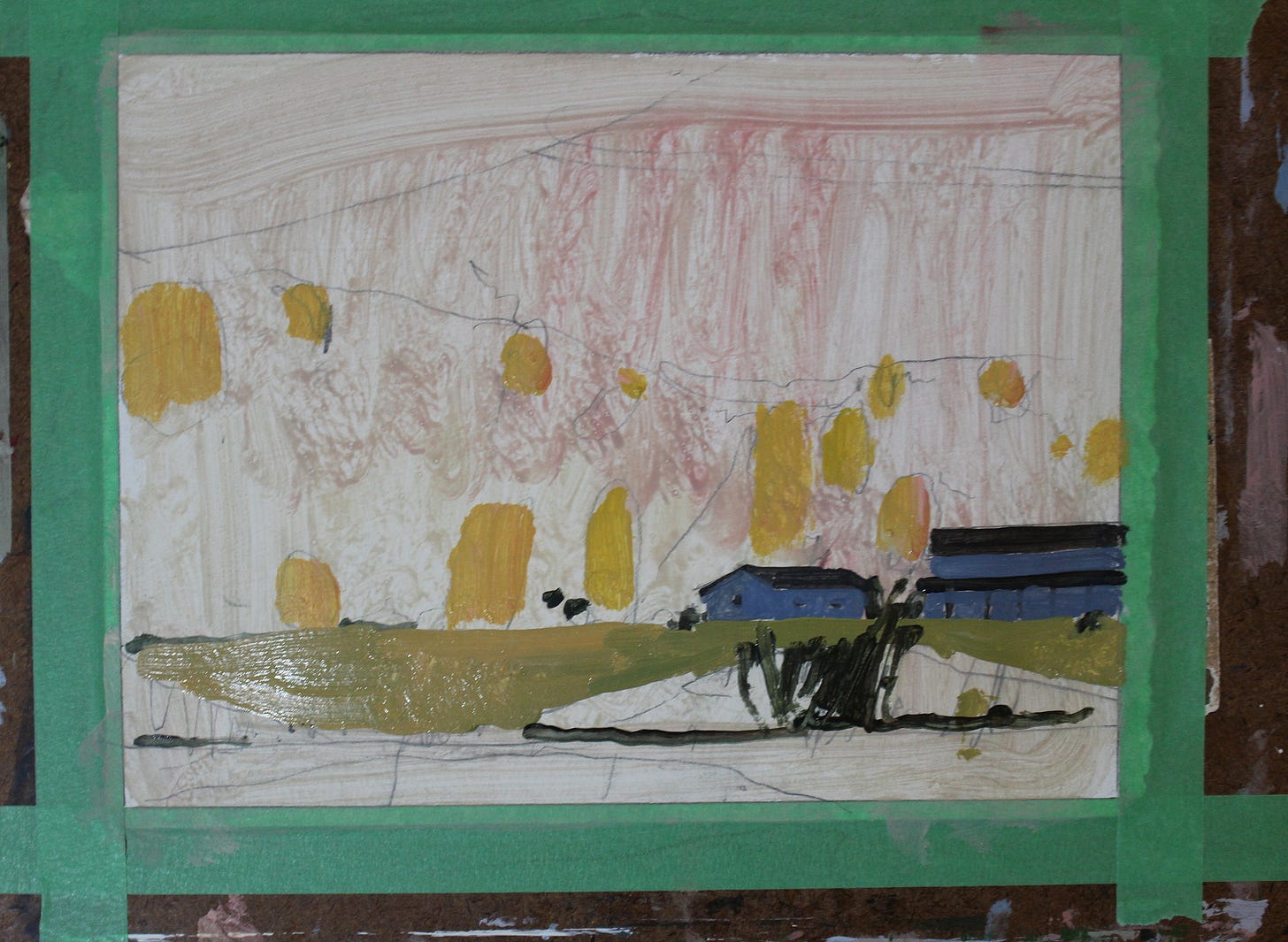
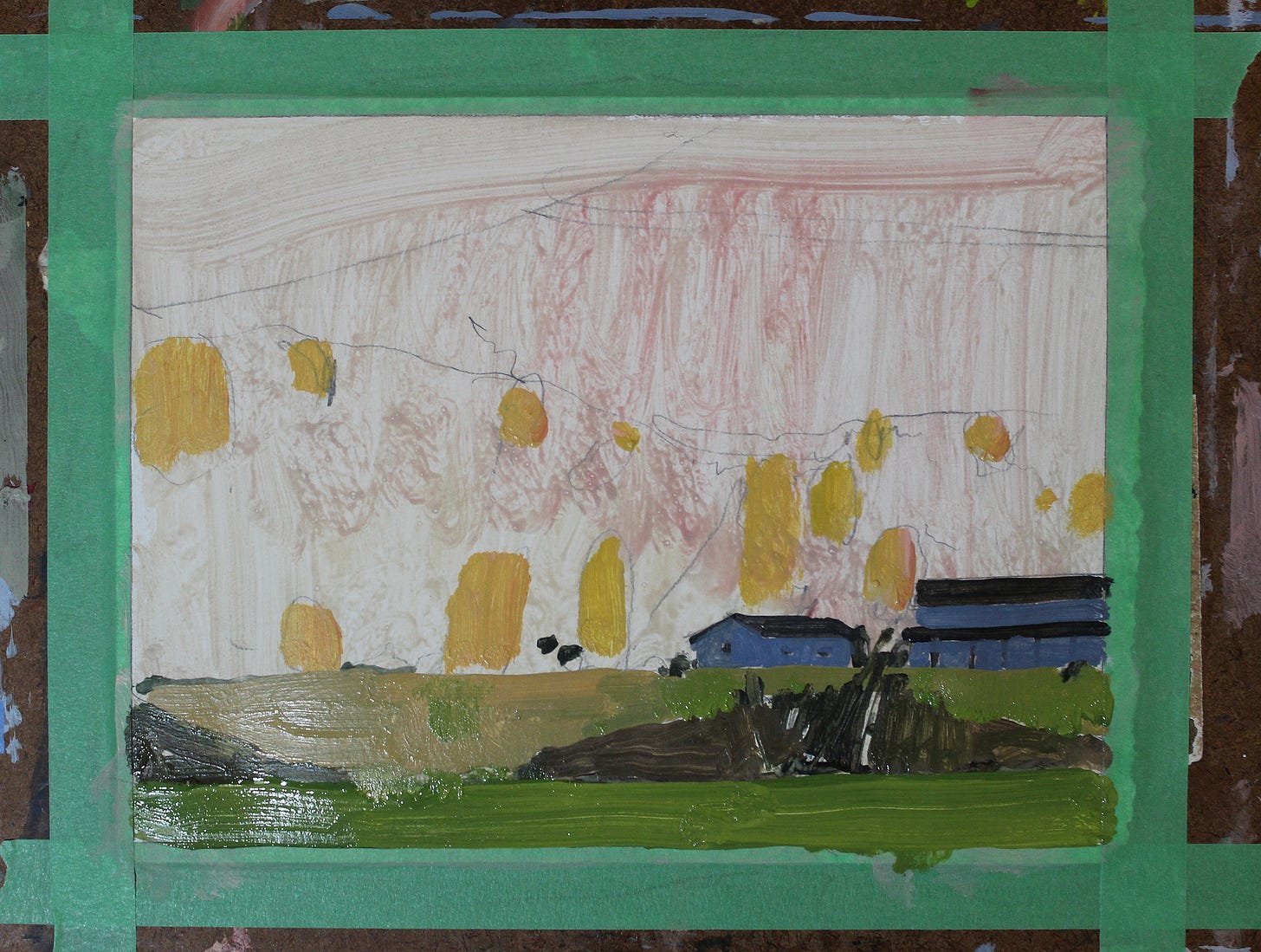
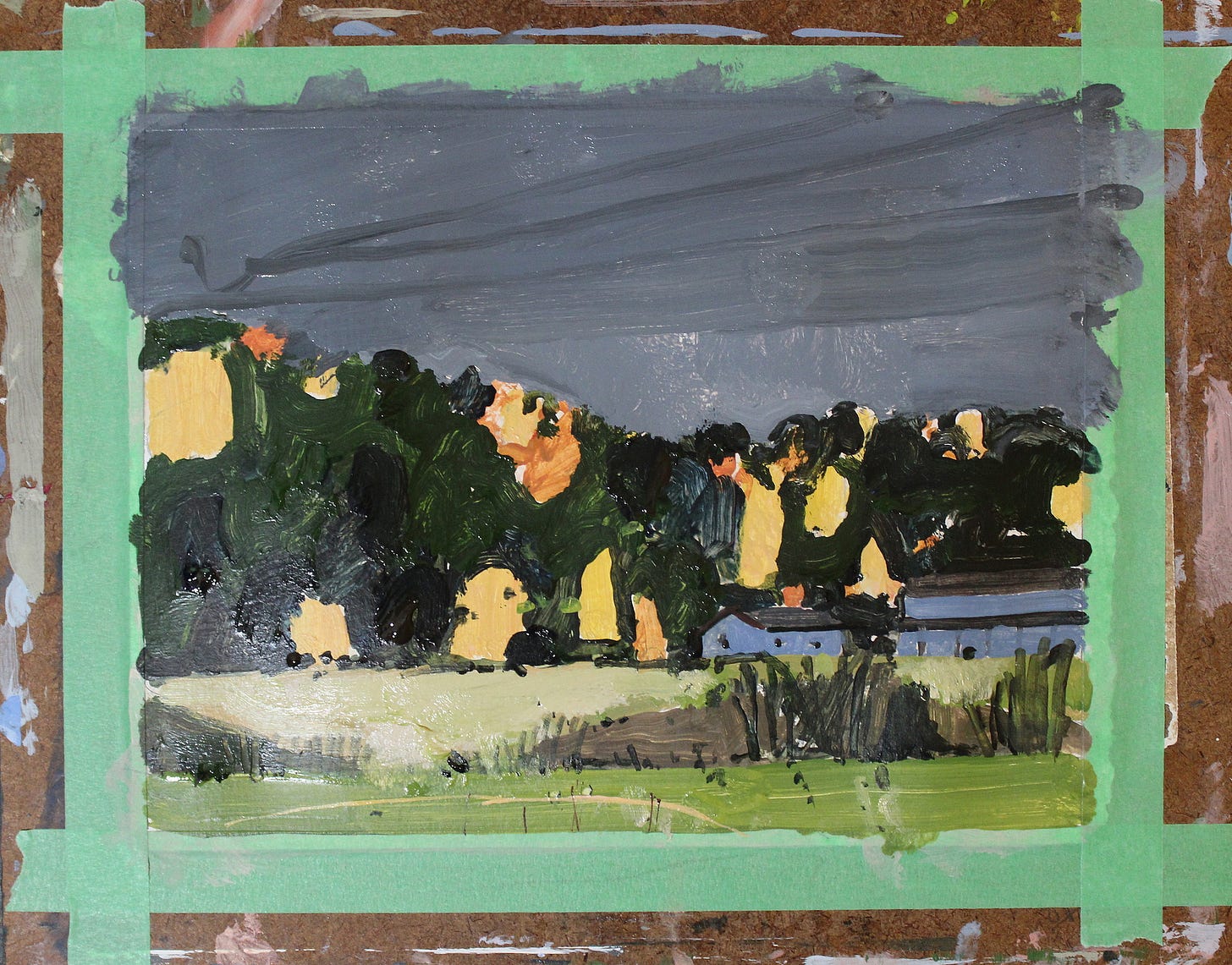
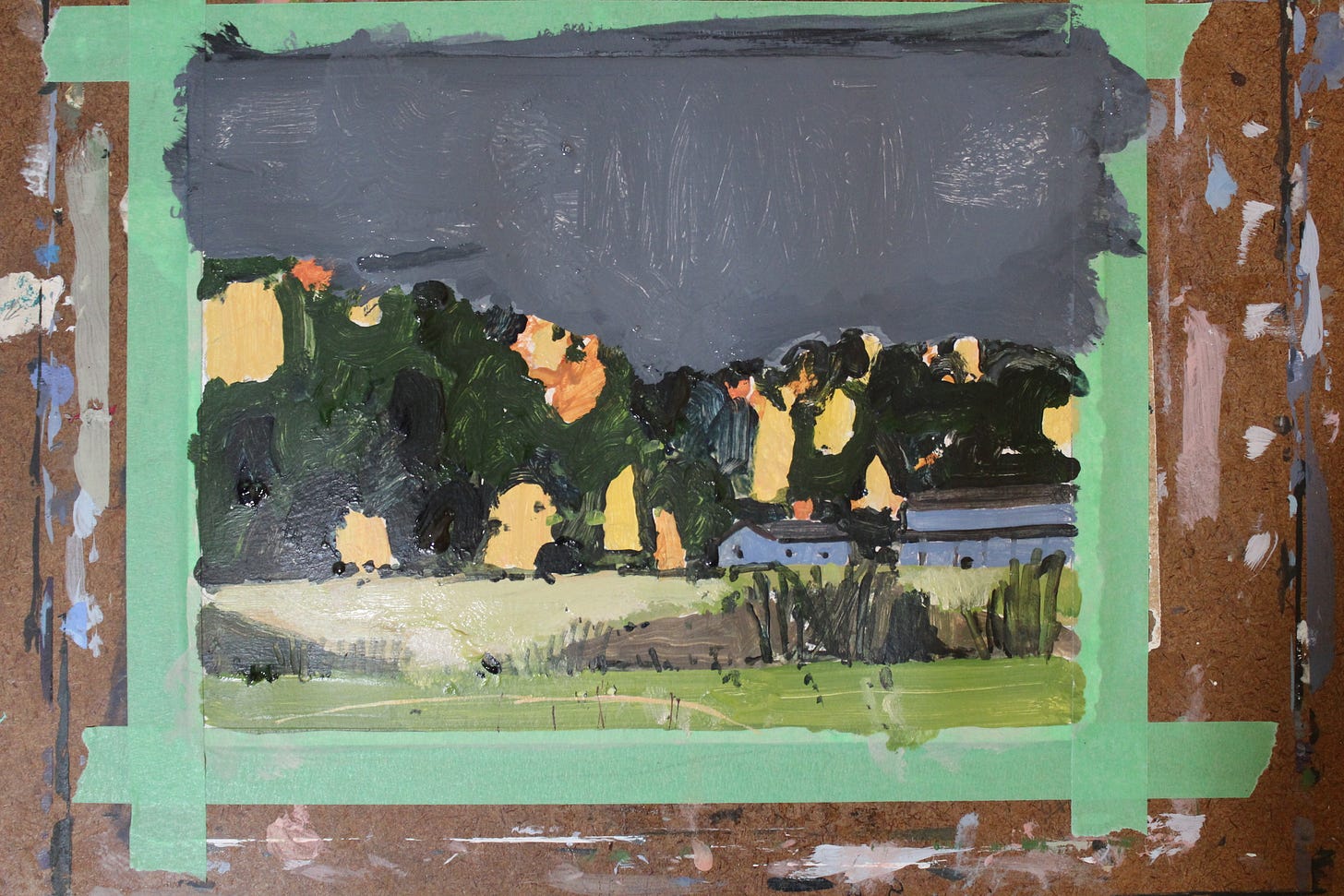
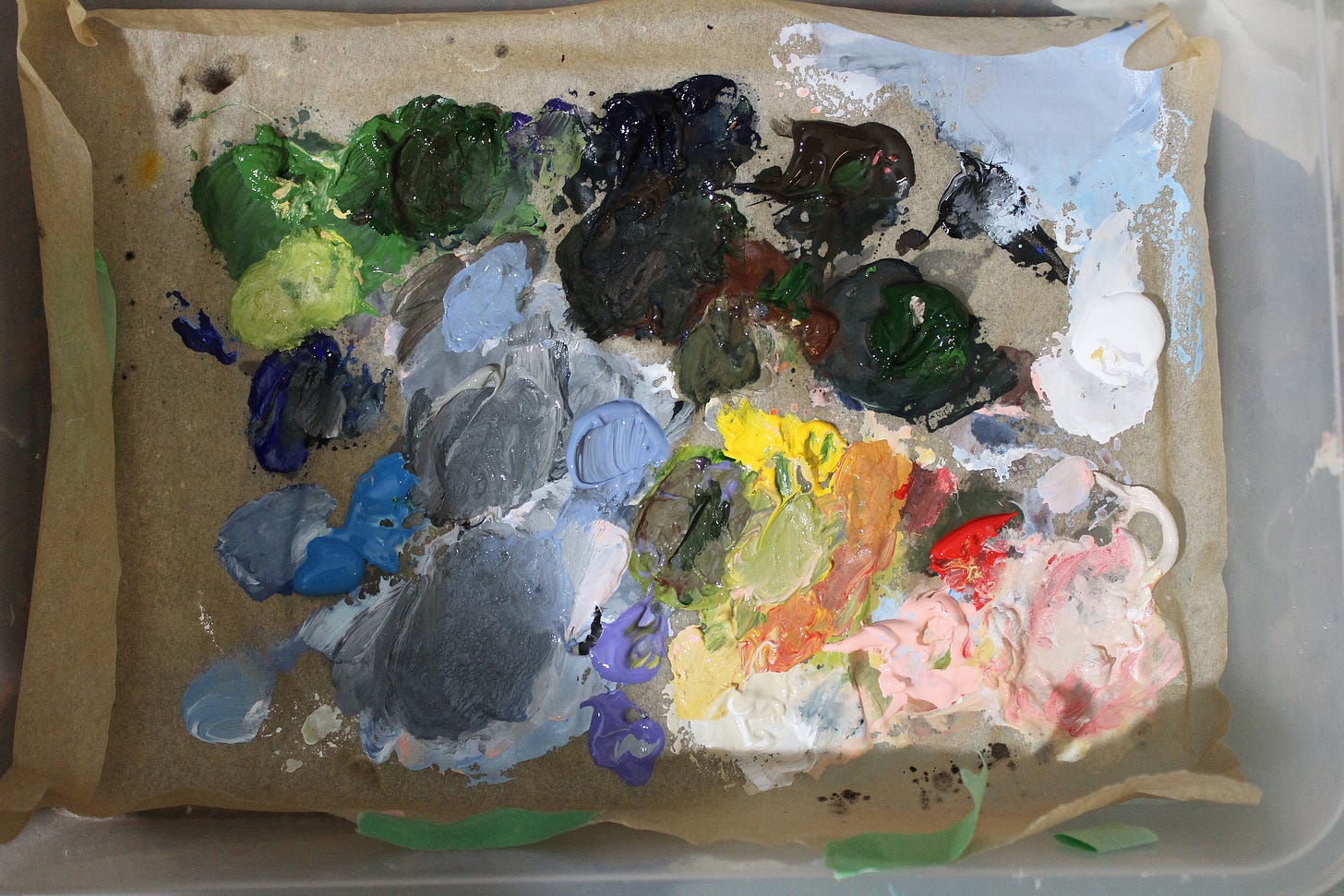
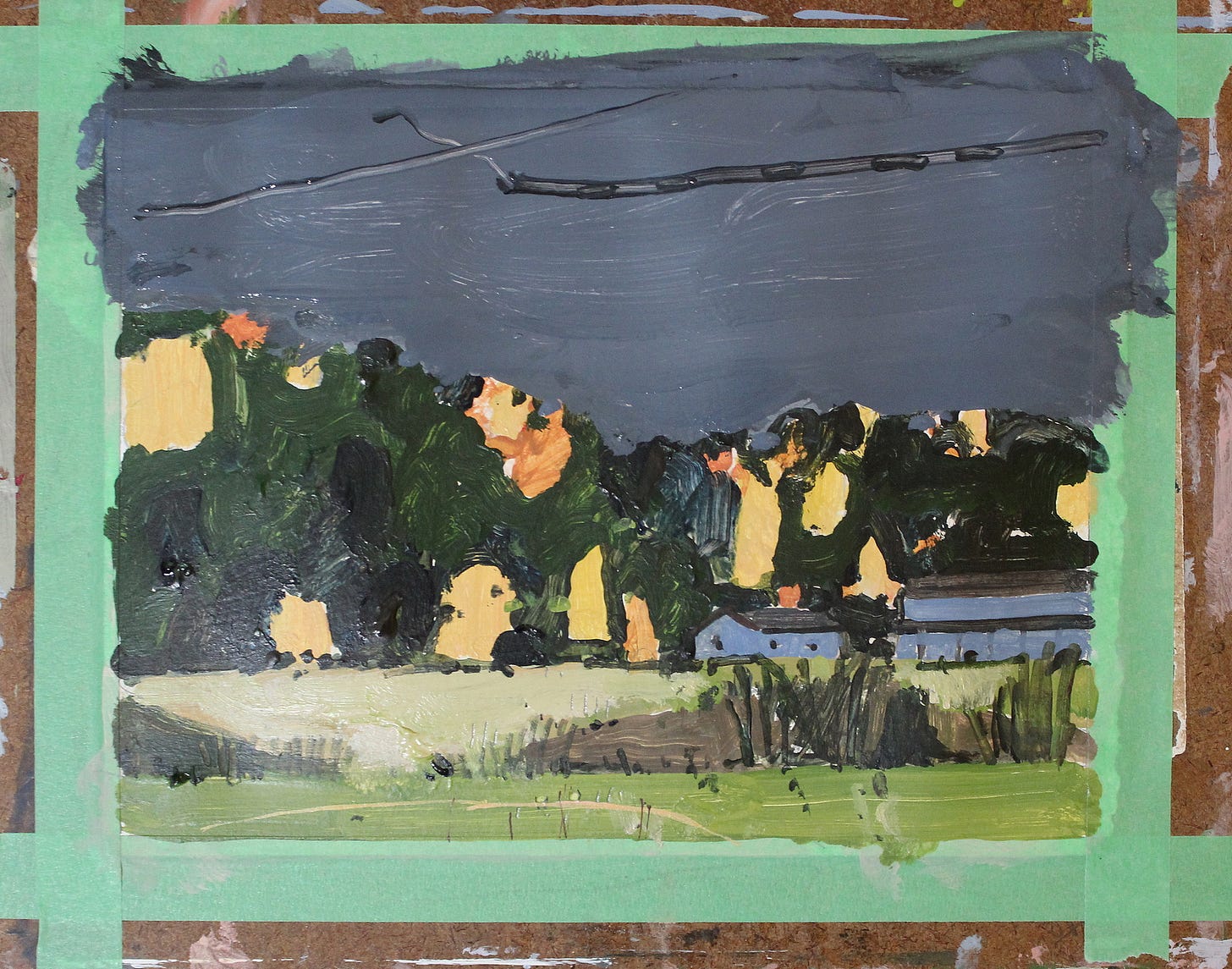
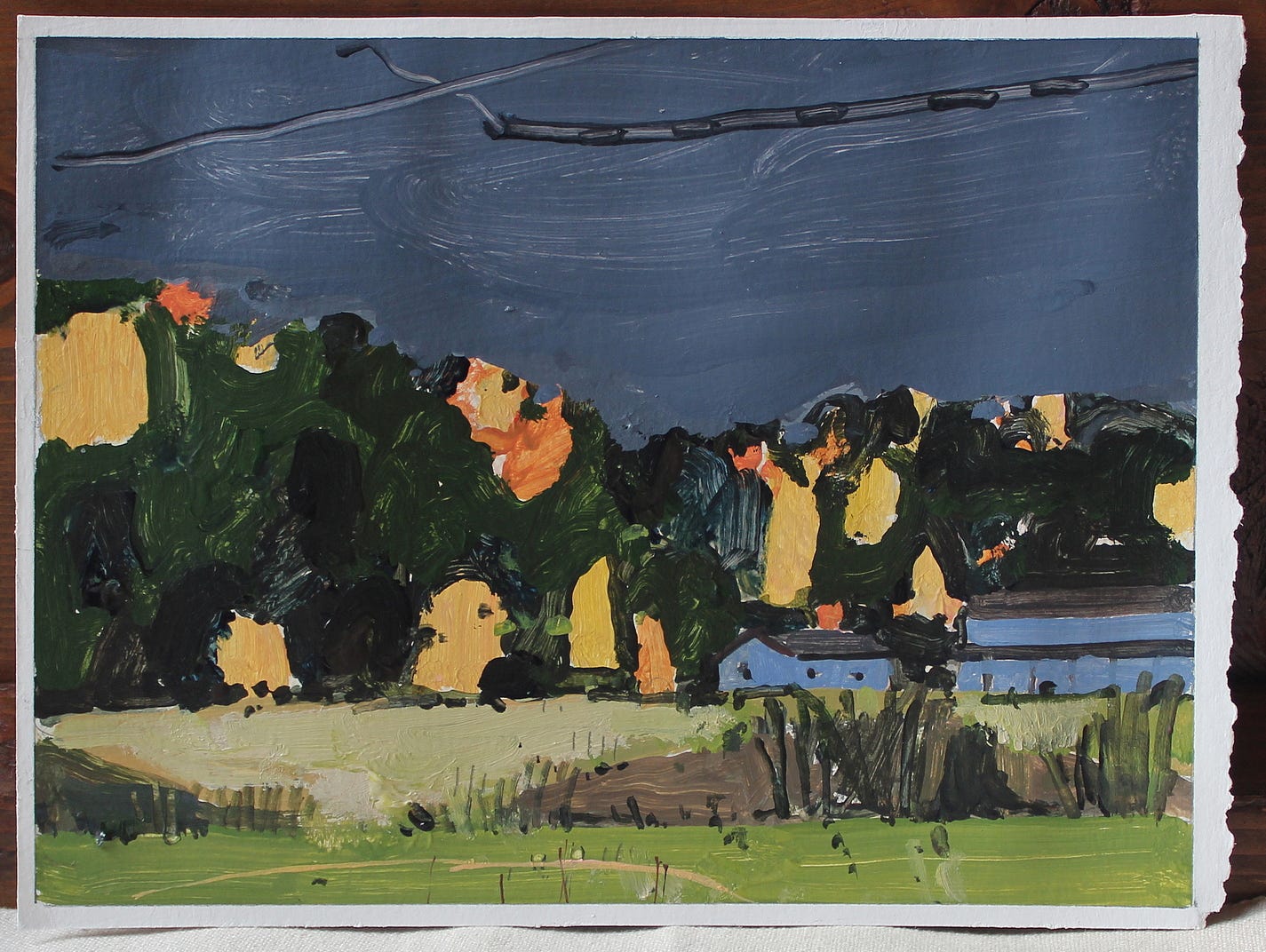
Great post! I think the crucial point is to establish a method and then, once you’ve explored its nuances and understand the results it yields, to adjust aspects of it to see how those changes impact the outcomes. Of course, it’s never as simple as adopting one fixed approach—if it were, we'd be producing masterpieces every time we stepped up to the easel. While having no method might seem appealing to those who equate creativity with complete freedom, approaching each painting session without consistency makes it difficult to discern which actions led to successful or unsatisfactory results.
This applies equally to evaluating your work. If you’re a creative who views judgment as something restrictive, it will be challenging to recognise which elements of the method contributed to stronger or weaker outcomes. So, while it’s essential to have a method, there isn’t a single ‘correct’ one. What matters most is awareness of your approach and the readiness to adapt it thoughtfully, allowing it to evolve and, ideally, lead to better results over time.
Thanks for this, Harry. I do find that sometimes I get caught up in processes that aren’t serving well anymore. It’s good to be reminded now and then that I am not a painting robot and to trust my ability to switch things up and still be able to find the ‘thread.’ I use parchment as a palette as well - sometimes I add some damp paper towel underneath, which helps keep paint wet during long painting sessions.